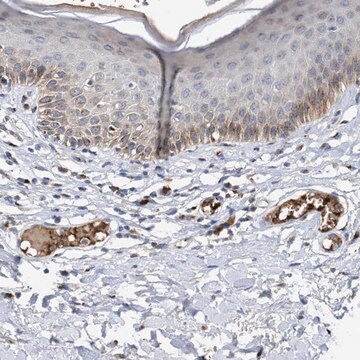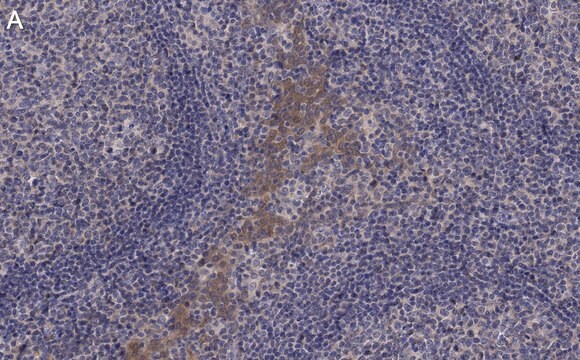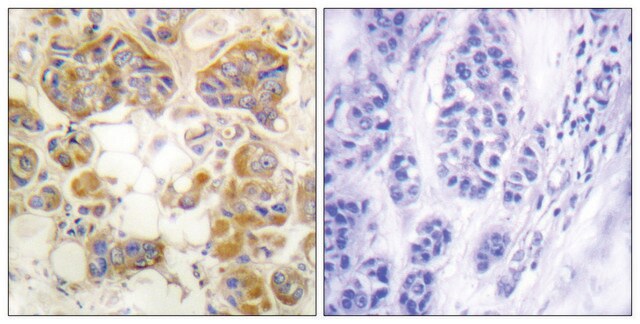MABN712
Anti-CCL2 Antibody, clone 2D8
clone 2D8, from mouse
Sinónimos:
C-C motif chemokine 2, Monocyte chemoattractant protein 1, Monocyte chemotactic and activating factor, Monocyte chemotactic protein 1, Monocyte secretory protein JE, Small-inducible cytokine A2
About This Item
Productos recomendados
biological source
mouse
Quality Level
antibody form
purified antibody
antibody product type
primary antibodies
clone
2D8, monoclonal
species reactivity
monkey, mouse, rat, human
technique(s)
flow cytometry: suitable
immunofluorescence: suitable
immunohistochemistry: suitable
western blot: suitable
isotype
IgG1
UniProt accession no.
shipped in
wet ice
target post-translational modification
unmodified
Gene Information
human ... CCL2(6347)
General description
Immunogen
Application
Immunohistochemistry Analysis: A 1:200-1,000 dilution from a representative lot detected CCL2 in human liver cancer tissue.
Flow Cytometry Analysis: A 1:200-400 dilution from a representative lot detected CCL2 in A549 cells.
Optimal working dilutions must be determined by end user.
Neuroscience
Signaling Neuroscience
Quality
Western Blotting Analysis: A 1:500-2,000 dilution of this antibody detected CCL2 in A549, HeLa, Raw264.7, L1210, C6 and COS-7 cell lysates
Target description
Physical form
Storage and Stability
Analysis Note
A549, HeLa, Raw264.7, L1210, C6 and COS-7 cell lysates
Disclaimer
¿No encuentra el producto adecuado?
Pruebe nuestro Herramienta de selección de productos.
Storage Class
12 - Non Combustible Liquids
wgk_germany
WGK 2
flash_point_f
Not applicable
flash_point_c
Not applicable
Certificados de análisis (COA)
Busque Certificados de análisis (COA) introduciendo el número de lote del producto. Los números de lote se encuentran en la etiqueta del producto después de las palabras «Lot» o «Batch»
¿Ya tiene este producto?
Encuentre la documentación para los productos que ha comprado recientemente en la Biblioteca de documentos.
Nuestro equipo de científicos tiene experiencia en todas las áreas de investigación: Ciencias de la vida, Ciencia de los materiales, Síntesis química, Cromatografía, Analítica y muchas otras.
Póngase en contacto con el Servicio técnico








